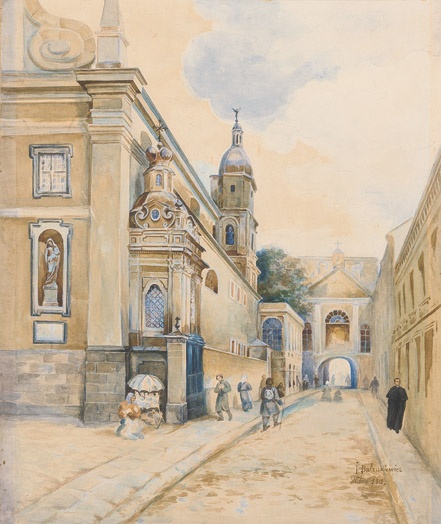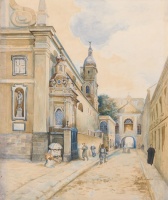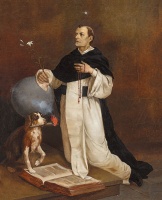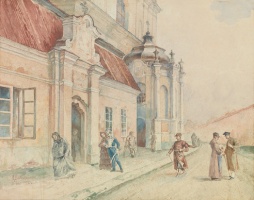

Gates of Dawn Street in Vilnius
| Author: |
Józef Bałzukiewicz (1866–1915)  |
| Created: | 1913 |
| Material: | paper |
| Technique: | watercolour |
| Dimensions: | 66.50 × 53 cm |
| Signature: | bottom right: I Bałzukiewicz / Wilno. 1913. |
Józef Bałzukiewicz (1866–1915), a member of a famous family of Vilnius artists, was a son of the woodcarver Wincent Bałzukiewicz. His siblings also chose artistic professions: his younger brother Bołeslaw became a sculptor, and his sister Łucja a painter. All were devoted lovers of Vilnius. Józef studied art at the School of Drawing in the city, and at St Petersburg Academy of Art, where he won a Grand Silver Medal for his achievements. Returning to live in Vilnius in 1897, he taught drawing in schools and participated in exhibitions. Bałzukiewicz painted portraits, landscapes, architecture, including interiors and courtyards, and pictures for churches. His paintings of Vilnius are distinguished by features of the realist tradition that he had studied in St Petersburg. The watercolour Gates of Dawn Street in Vilnius shows a deep view of the street, and the usual life there. A woman sells devotional items at a stall, passers-by hurry on their way, a Catholic priest and peasants from the Vilnius region walk along the street, and people pray in the distance by the gate. It was not the crowds of worshippers and the rituals of the place that drew the artist’s attention, but the quiet everyday life of the street.
Source: Law firm Valiunas Ellex art album VILNIUS. TOPOPHILIA I (2014). Compiler and author Laima LaučkaitėExpositions: “Académie de Vilna. Vilnius Drawing School (1866–1915)”, 5 October – 26 November 2017, National Gallery of Art, Vilnius (curator Jolanta Širkaitė). Published: Académie de Vilna: Vilniaus piešimo mokykla 1866-1915 / Vilnius drawing school: Exhibition Catalogue, Nacionalinė dailės galerija 2017 m. 4 d. - lapkričio 26 d., compiled by Jolanta Širkaitė, Vilnius: Lietuvos kultūros tyrimų institutas, 2017, p. 92.









